Amazing Aerial Photos Show The True Magnitude Of The Alberta Tar Sands Developments
Helbig started the project in 2007, when, he says, the expansion was not yet world news. It was, however, the topic of many conversations in Alberta, especially among those who wanted to head to the Tar Sands to find work.

Helbig, looking to see what all the buzz was about, decided to visit. "I thought I would go up there and do some aerial photography and see what was hidden in plain sight," he recently told Business Insider.
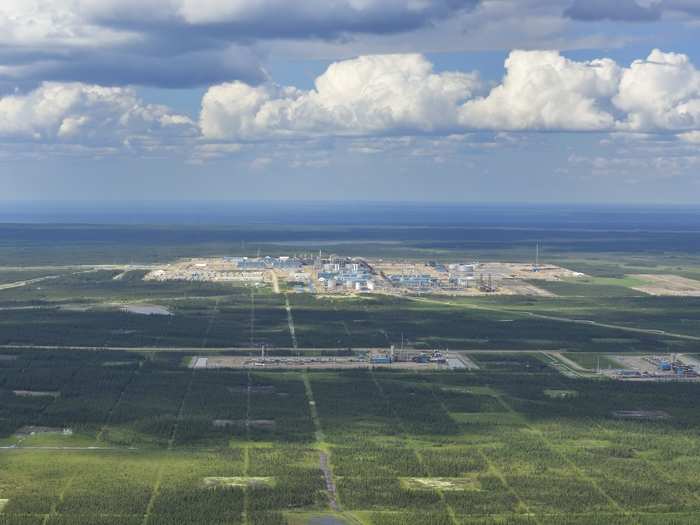
When he first flew over the Tar Sands with his now wife, Kristin Reimer, the sheer magnitude of what he saw amazed them.
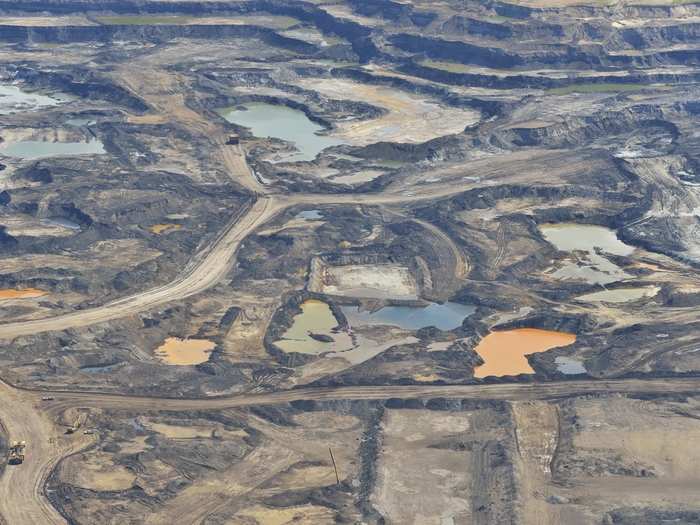
"All the operations, the open pit mining, the large, oily tailing ponds, the refineries, the whole thing situated somewhat incongruously in the boreal forest, is stunning," he explains.
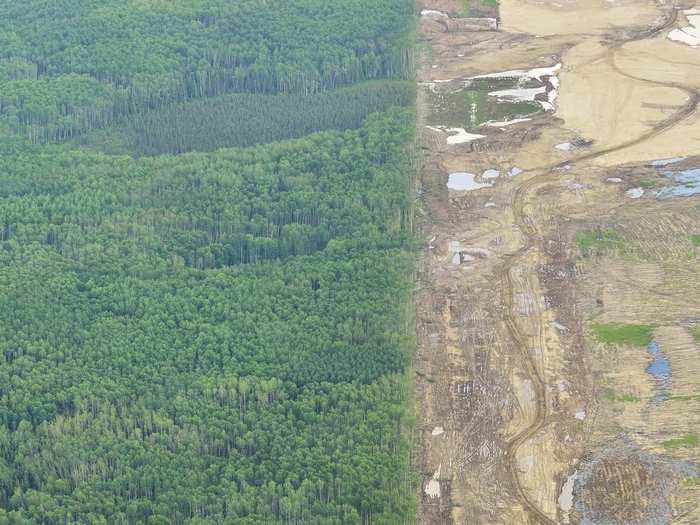
There are two main ways to extract oil from the Tar Sands. One way, known as "open-pit mining," extracts the bitumen oil which is closer to the surface of the Earth buy removing the soil above it.
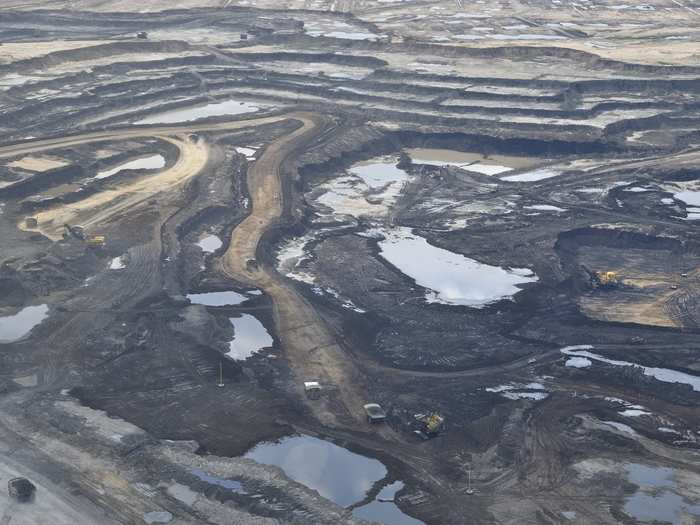
The earth above the oil, known as "overburden," must be completely removed, including all trees, plants, or other natural elements, in order to access the oil underneath.
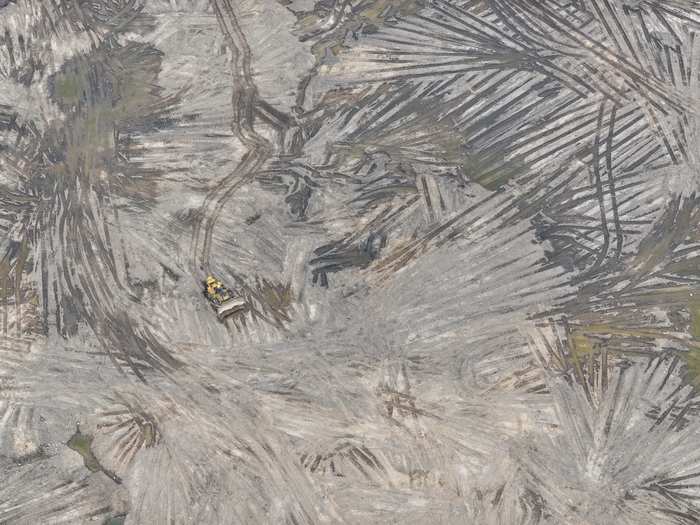
This extraction method is obviously quite destructive. Luckily, only 20% of the oil in the area can be mined in this manner. Still, that's a lot of land.
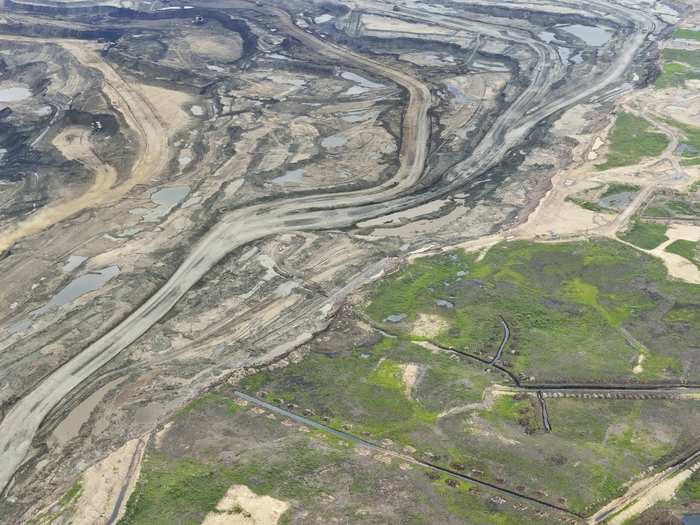
The second method, known as "steam-assisted gravity drainage," or SAGD for short, accesses oil deeper in the earth, pumping steam into the reservoir which reduces the viscosity of the oil, causing it to drain to a wellbore dug below. From there, the oil is pumped out and up to the surface.
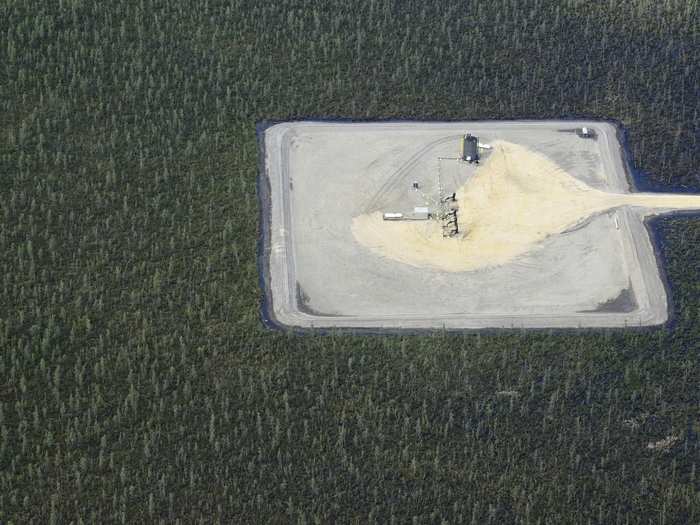
While less invasive then open-pit mining, SAGD methods require large and long pipelines to funnel the bitumen to the refineries.
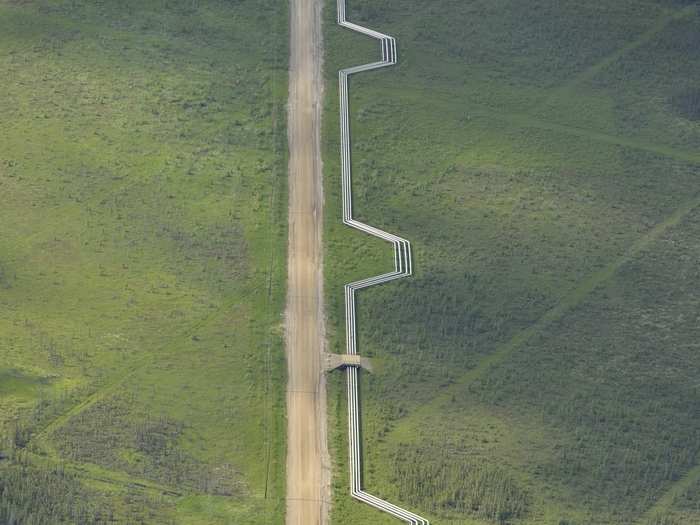
In 2013, Helbig spent seven weeks traveling all around the Athabasca region. He says he saw a massive growth from his prior visit, with increases in both types of mining, especially SAGD. "They’re sprouting up in the middle of nowhere. You might be 50, 60, 80 miles from nowhere and then all the sudden there’s this thing in the middle of the woods," he tells Business Insider.
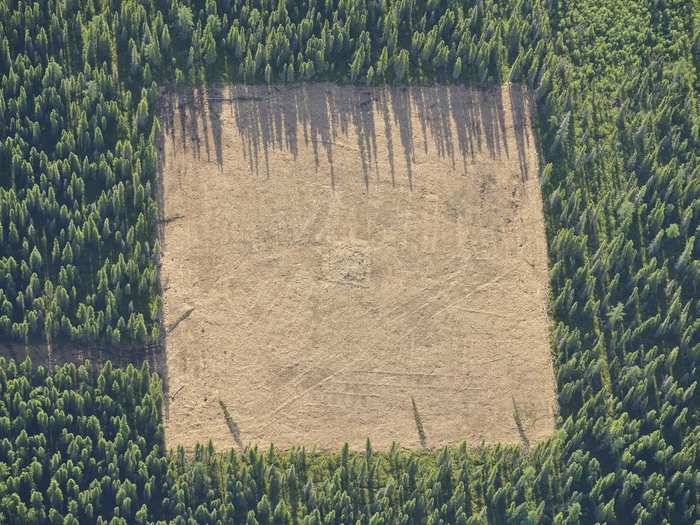
Louis continues: "When you're impressed by change from the air, that usually translates to much more impressive change on the ground."
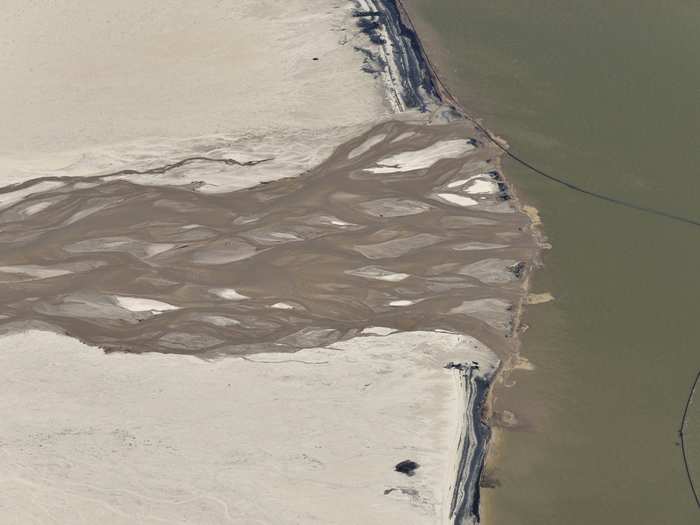
Another feature of development which dominates the landscape are the large tailing ponds which collect the byproduct produced when refining the oil. They pose a large environmental risk as much of the runoff is potentially harmful to animals and can possibly leak into fresh water sources.
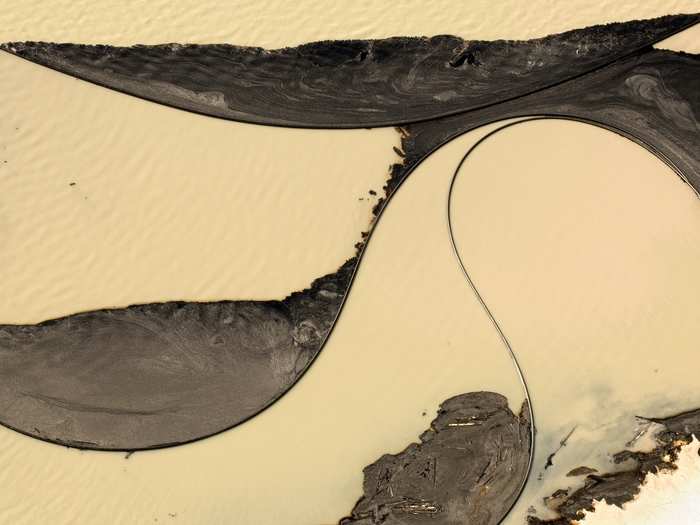
The oil deposits in the Athabasca region are the largest of its kind on Earth, and the extraction of it is currently the largest industrial project on Earth, according to Helbig. “It’s a story of growth," he says.
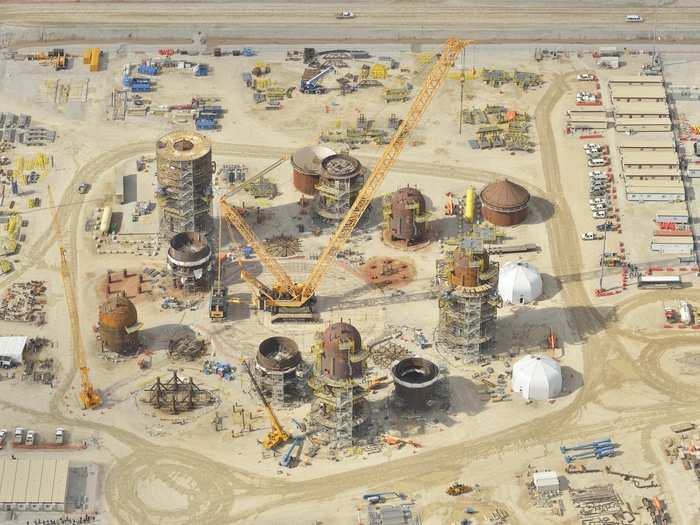
With that growth comes a great influx of people, workers who man the operations as well as building the infrastructure. They come for the promise of great paying jobs, a promise which, by all accounts, has been true so far.
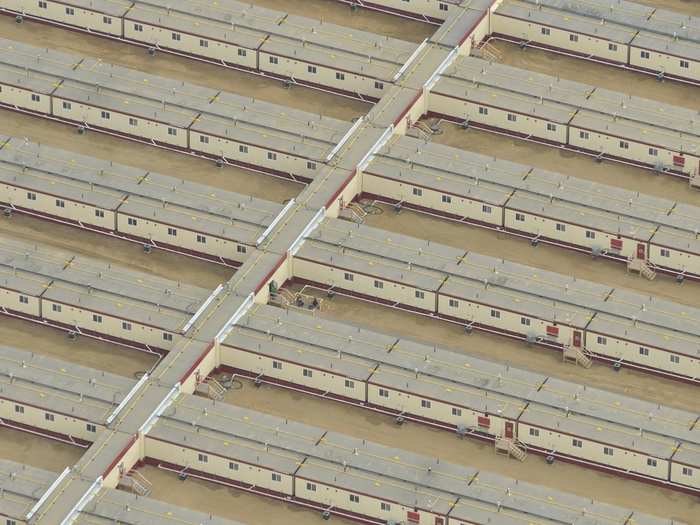
"The main activity for workers is in construction of the facilities rather than the operations, so that construction translates to ever larger tracts of forests being cut down and lines are being expanded," Helbig explains.
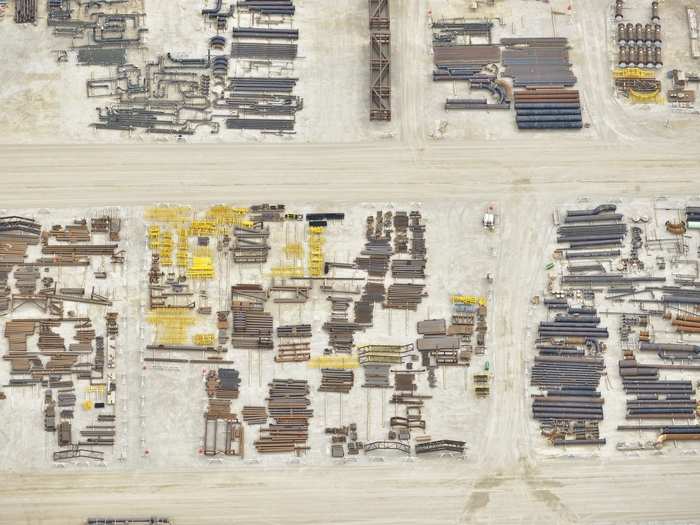
Even though there are not many people visible in Helbig's work, he says he saw people who "looked like ants" all over the place. "There’s people everywhere. Welders, carpenters, working on things. There is a great human impact, people are everywhere involved in every single aspect," he says.
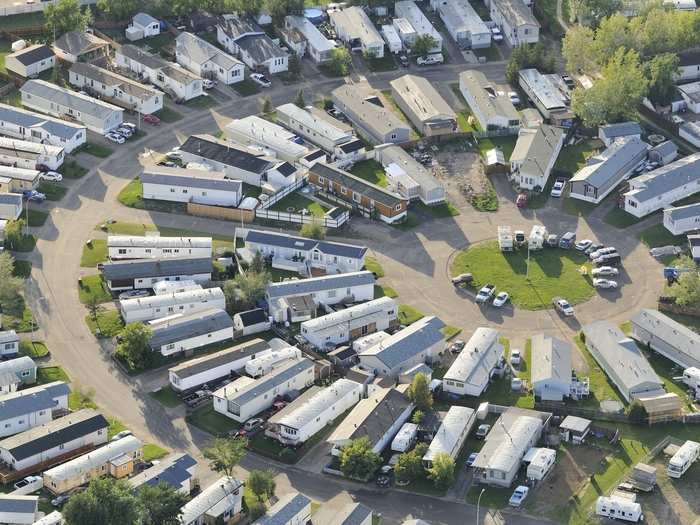
In his series, Helbig intentionally tries to stay neutral and not pass judgement on the politics of the project, good or bad. "There’s a certain oversimplification that’s being brought to bare from both sides. I don't think it's particularly helpful in addressing the issue and mitigating whatever the problems are," he says.
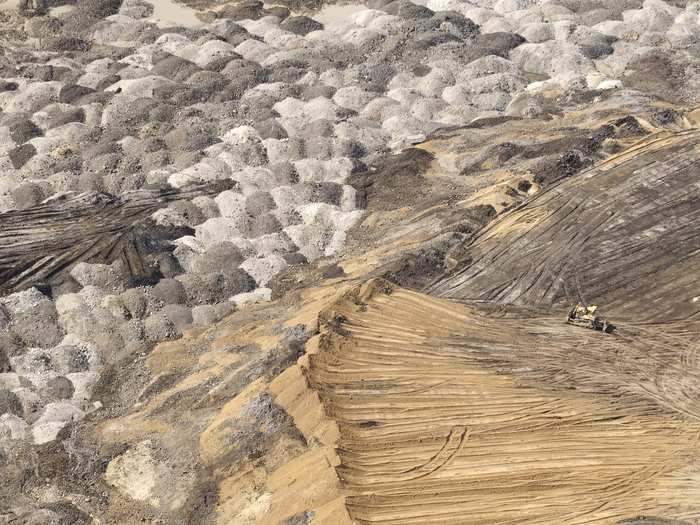
Helbig believes his role as an artist is to present what he sees and to let others draw their own conclusions. He hopes to spark discussion and create "a space for engagement and for dialogue, for substantive debate and discourse by which we might actually be able to move forward," he explains.
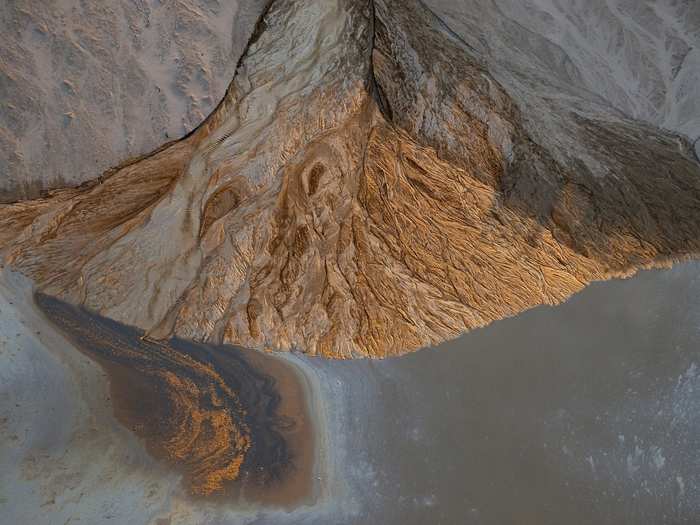
To this point, Helbig presents 15 essays in his book, each detailing varying and at times counterpoint stances on the development in the Tar Sands.

One of the most interesting essays comes from Chief Allan Adams, leader of the Athabasca Chipewyan First Nation. In it, Chief Adams depicts the conflicting feelings within his community. His constituents are seeing both immense benefits economically from the development, as well as drastic losses in the land they hold so dear.
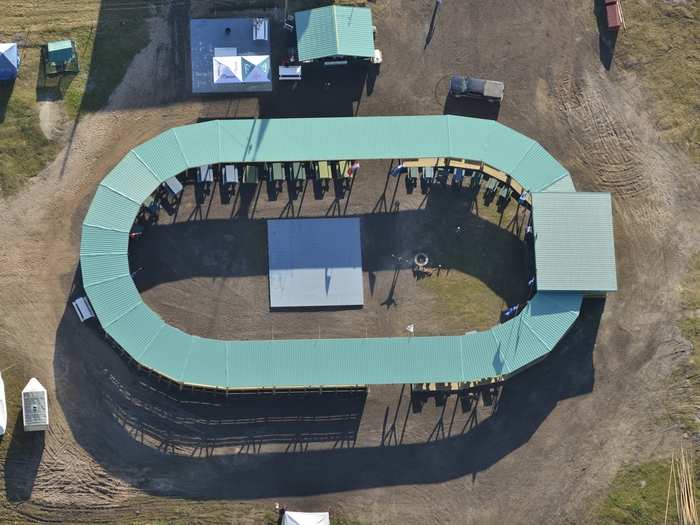
Helbig says this duality is felt in more than just the Native American community. "That kind of contradiction and drama is widespread... I think that says a lot about who we are as human beings," Helbig says.
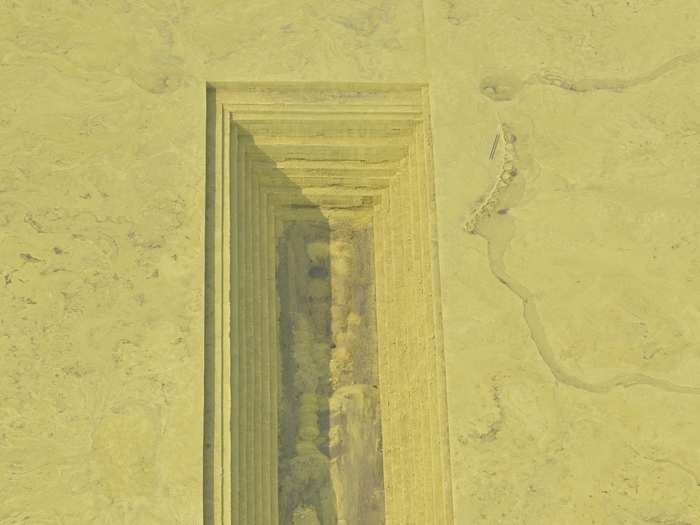
Regardless of your opinion on the vast developments, Helbig says the area is a striking and beautiful place.
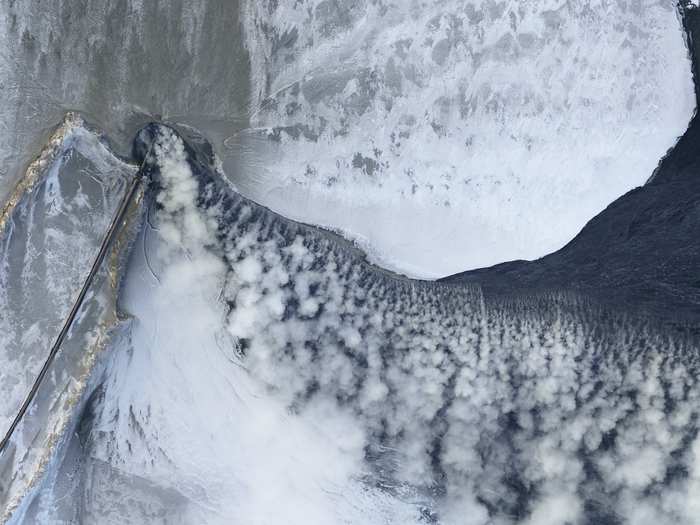
When struggling to name the series, he consulted his godfather. While looking at the images, his godfather, , a former English teacher, referenced a W.B. Yate's poem, saying the pictures presented a "terrible beauty." Quite quickly, Helbig arrived at the name "Beautiful Destruction."
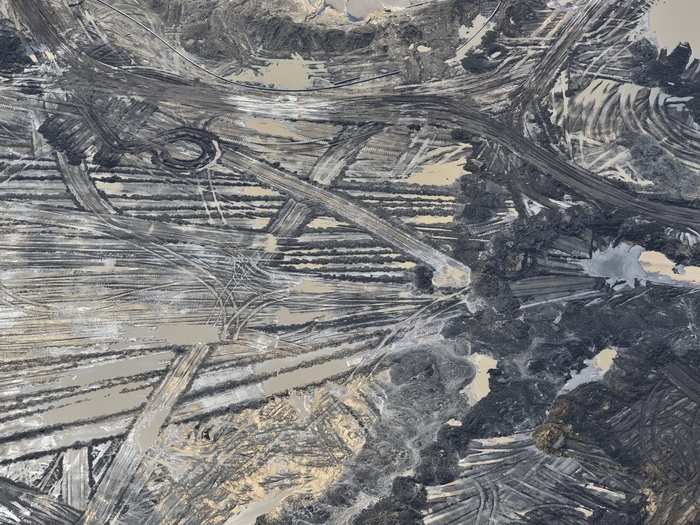
"Politics aside, it’s a profoundly moving place," Helbig says.
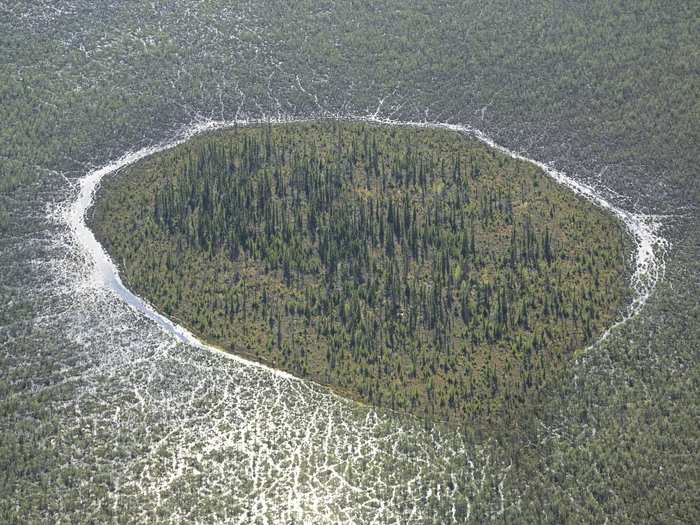
Want more beautiful photos of science and nature?
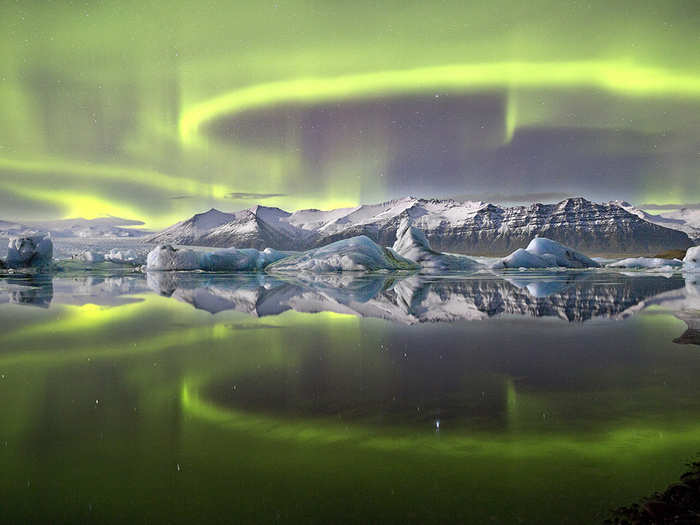
Popular Right Now
Advertisement